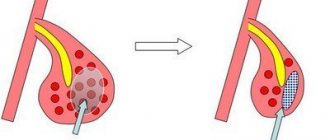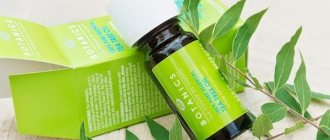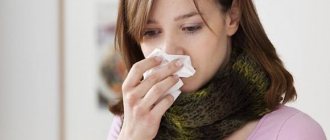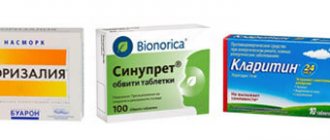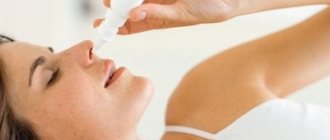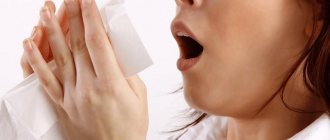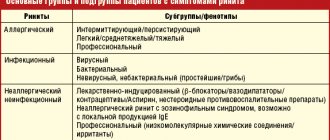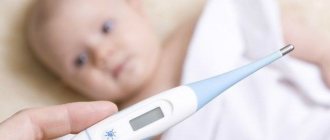What happens when a person breathes?
Breathing is a complex process of air exchange in which many organs are involved:
Lungs
- These are a pair of spongy organs located on either side of the chest.
The lungs expand when a person inhales and contract when they exhale. Each lung is surrounded by a thin membrane called the pleura
, which protects the lung and allows it to slide back and forth during breathing.
Diaphragm
is a thin muscle that is located under the lungs and above the abdominal cavity. Its up and down motion helps the lungs contract and expand.
Intercostal muscles
- These are the muscles that are located between the ribs. They help the chest cavity expand and contract.
The lungs, diaphragm, and intercostal muscles work together to allow a person to breathe.
When you inhale, the diaphragm moves down. This increases the space in the chest cavity, allowing the lungs to expand and fill with air.
When you exhale, the diaphragm relaxes, reducing the space in the chest cavity. This causes the lungs to release air.
How to breathe correctly?
Although breathing is a natural process, some people may be surprised to learn that there is a right and wrong way to breathe.
Doctors give the following recommendations on how to breathe correctly.
Use your nose
Breathing through your nose can slow your breathing and make your lungs work more efficiently. This facilitates the consumption of nitric oxide, which helps with the transport of oxygen throughout the body.
When breathing through the nose:
- Toxins and allergens are filtered from the air, thereby preventing them from entering the body
- the air becomes warm
- too dry air is humidified
However, mouth breathing is sometimes necessary if a person exercises or has sinus congestion.
Use your stomach
The most effective way to breathe is to “bring the air down to your stomach.” As the diaphragm moves down, the abdomen expands to fill the lungs with air.
“Belly breathing” is effective because it pulls the lungs down, creating negative pressure inside the chest. This causes air to enter the lungs.
What effect does breathing exercises have?
Pneumonia is a disease in which inflammatory processes occur in the lungs. It is accompanied by respiratory failure and a decrease in the volume of functional tissue, which disrupts the process of gas exchange in the lungs and reduces the supply of oxygen to the brain and other organs.
This causes the development of stagnant processes in the body, exacerbations of chronic diseases occur, and the functioning of the cardiovascular system is disrupted. To solve these problems as quickly as possible, breathing exercises are added to drug therapy, which:
- helps improve gas exchange and better saturate the blood with oxygen;
- stimulates lymphatic blood flow;
- trains the respiratory muscles and teaches diaphragmatic breathing;
- promotes drainage function in lesions, i.e., cleansing the respiratory tract of mucus;
- increases the depth of inspiration;
- relieves symptoms of intoxication;
- improves the general condition and mood of the patient.
Improvement with breathing exercises
In addition, exercise helps protect against possible and very frequent complications after pneumonia.
Such as:
- adhesions in the lung tissue;
- emphysema;
- atelectasis;
- violation of the shape of the chest.
The basis of the health-improving effect of respiratory gymnastics is the ability to voluntarily regulate the duration and force of inhalation and exhalation, the ability to hold or force breathing. This is what contributes to the speedy recovery of the patient, the resorption of inflammatory foci and the restoration of his working capacity.
Selection of nurses for caring for the sick: https://zabotta.ru/sidelka-v-bolnicu
Tips for proper breathing
It is important not to overdo your breathing. This can lead to restlessness and shortness of breath in some people.
Don't overthink it
It should be remembered that normal breathing is a carefully regulated process that does not require conscious thought.
Together, the lungs and kidneys maintain blood pH within a narrow range to allow the body to function properly. Receptors in the body control blood pH and oxygen levels. These receptors send signals to the brain, which in turn sends nerve impulses that tell the body how often to breathe and how deeply.
Maintain a healthy lifestyle
People can improve their breathing by maintaining a healthy lifestyle:
- Regular exercise
helps increase lung capacity, which is the amount of oxygen a person can inhale with each breath. - Avoid large meals
: Eating large amounts of food can cause bloating. When the abdomen is distended, it can put pressure on the diaphragm, preventing it from descending effectively. This may lead to shortness of breath. - Maintaining a moderate weight
: Being overweight increases your risk of breathing difficulties such as obstructive sleep apnea. People can reduce this risk by maintaining a moderate weight. - Smoking cessation
: The lungs contain tiny air sacs called
alveoli
, which are responsible for exchanging oxygen and carbon dioxide between the lungs and capillary blood vessels. Smoking damages the alveoli, making them less effective.
Nasal rinse
Traditionally recommended to relieve and prevent symptoms of catarrh, colds, sinusitis, hay fever and other allergic reactions, and to ease the mind.
Nasal rinsing is an ancient yogic art, known in practice as neti.
This treatment is recommended to relieve symptoms of nasal and sinus conditions, ease breathing, improve mental clarity and as an introduction to yoga and meditation.
Many people use nasal rinses as a daily procedure. Others prefer to use neti after returning home from work.
This simple method cleanses and moisturizes the airways and mucous membranes. On the surface of the mucous membrane in the nostrils, sinuses, trachea, bronchi and auditory canals (between the nose and middle ear) there are microscopic hairs called cilia. Nasal rinsing stimulates the movement of cilia to remove phlegm, dust, pollen, bacteria and viruses and facilitates pulmonary breathing.
A dry environment reduces the effectiveness of the cilia, drying out the mucous membranes. Rinsing your nose restores its natural moisture and reduces the swelling that causes nasal congestion.
Neti can also be helpful during pregnancy and to stop snoring.
It stimulates and relaxes the area around the eyes and forehead, which reduces headaches caused by nervous tension. For some people, visual acuity improves and their sense of smell becomes sharper.
Neti also helps to quit smoking.
Regular use of neti makes breathing through the nose easier. The inhaled air is heated and filtered. Nitric oxide produced in the sinuses is carried along with the breath to the lungs, where blood vessels dilate and oxygen absorption increases.
In many countries, nasal rinsing is one of the ancient methods of preventing colds. In the early twentieth century, nasal clearing utensils and aerosols were available in pharmacies in Europe. Their popularity then declined until the late 1970s, when interest in them was revived with the growing popularity of yoga and its impact on the treatment of pulmonary diseases and vision problems.
Today, many doctors have understood the benefits of neti and recommend the technique for regular use. Thomas Schmidt, professor and doctor of medicine from the Medical University of Hannover says that nasal rinsing improves overall health. The more regularly you use it, the better and more stable the results.
Tips for people with respiratory conditions
People with respiratory conditions such as asthma or chronic obstructive pulmonary disease (COPD) can take extra precautions to protect their lung health.
- Drinking large amounts of water adds moisture to the air a person breathes. Humid air does not irritate the respiratory tract.
- Eliminating sources of indoor air pollution: People should ensure that their living and working environments are clean and well ventilated. This will help prevent irritation of the respiratory tract.
- Using protective equipment at work: Some people may work in environments where they are exposed to dust, chemicals or fumes. These people should wear a mask to avoid inhaling these irritants.
- Getting a flu or pneumonia vaccine helps protect people with respiratory illnesses.
- Breathing exercises and other relaxation techniques can help a person stay calm and prevent hyperventilation.
Breathing exercises
Breathing exercises help slow a person's breathing and increase the efficiency of the lungs. Exercise is especially beneficial for people with asthma, COPD and other conditions that cause shortness of breath.
People should start practicing breathing exercises when their breathing is normal, not when they are short of breath.
Doctors recommend trying two different breathing techniques: pursed-lip breathing and diaphragmatic (abdominal) breathing.
Ideally, people should practice both exercises for 5-10 minutes every day and gradually increase the duration.
Breathing through pursed lips
- Sit in a chair and relax the muscles in your neck and shoulders.
- Inhale slowly through your nose, keeping your mouth closed. Inhale for 2 seconds.
- Purse your lips as if you were whistling or blowing out a candle. Exhale slowly for 4 seconds.
- Repeat the breath
Diaphragmatic breathing
A person can perform the following activities while lying down or sitting in a chair.
- Place both hands on your stomach, feeling it move.
- Close your mouth and inhale slowly through your nose, feeling your belly rise and inflate like a balloon.
- Exhale slowly through pursed lips, as if blowing bubbles, with each exhalation taking about two to three times longer than the inhalation.
- Repeat these steps for 5-10 minutes. Keep your hands on your stomach to become aware of the correct breathing technique.
Remove nasal congestion with yoga
Breathing exercise 1
- Take a comfortable position, straighten your spine.
- Try to inhale and exhale completely. Although it will be quite difficult, you should try and feel how breathing becomes easier with each inhalation and exhalation.
- Place your finger on the bridge of your nose, the second on one nostril, and the third on the other nostril. Take a full breath in through your nose, then close your right nostril with your finger and exhale slowly.
- Take another full breath in through your nose, holding your left nostril with your finger, and exhale slowly.
- Repeat the exercise 5 times for each nostril.
Breathing exercise 2
- Sit on a chair or on the floor with your spine straight.
- Place your fingers as in the first exercise, only now you will need to pinch one nostril.
- Exhale slowly, hold your breath and slightly release the pinched nostril and press the other.
- After that, hold the other nostril and do the same.
- Perform the exercise 5 times for each nostril.
- After completing all the exercises, touch the bridge of your nose and paranasal sinuses with your finger. Lubricate them with medical Vaseline.
Exercises can be combined with each other to get rid of nasal congestion and achieve better results in the treatment of pulmonary diseases.
Breathing exercise 3
If you are unable to clear your nose, do the following exercise and see if you can breathe through your nose for 1 minute. The golden rule is that if you can breathe through your nose for 1 minute, you can do it for the rest of your life.
- Sit down, keep your spine straight.
- Take a small breath in through your nose and exhale the same way. If your nose is completely blocked, breathe in some air through your mouth.
- Pinch your nose with your fingers and hold your breath. Keep your mouth closed.
- Gently shake your head or rock your body until you feel like you can't hold your breath any longer. Keep your nose pinched until you feel a strong desire to breathe.
- When you have to inhale, inhale through your nose and breathe with your mouth closed.
- Calm your breathing as soon as possible.
- Wait 30 seconds and repeat the exercise as many times as possible until the nose is unblocked. This should take 3-5 minutes.
